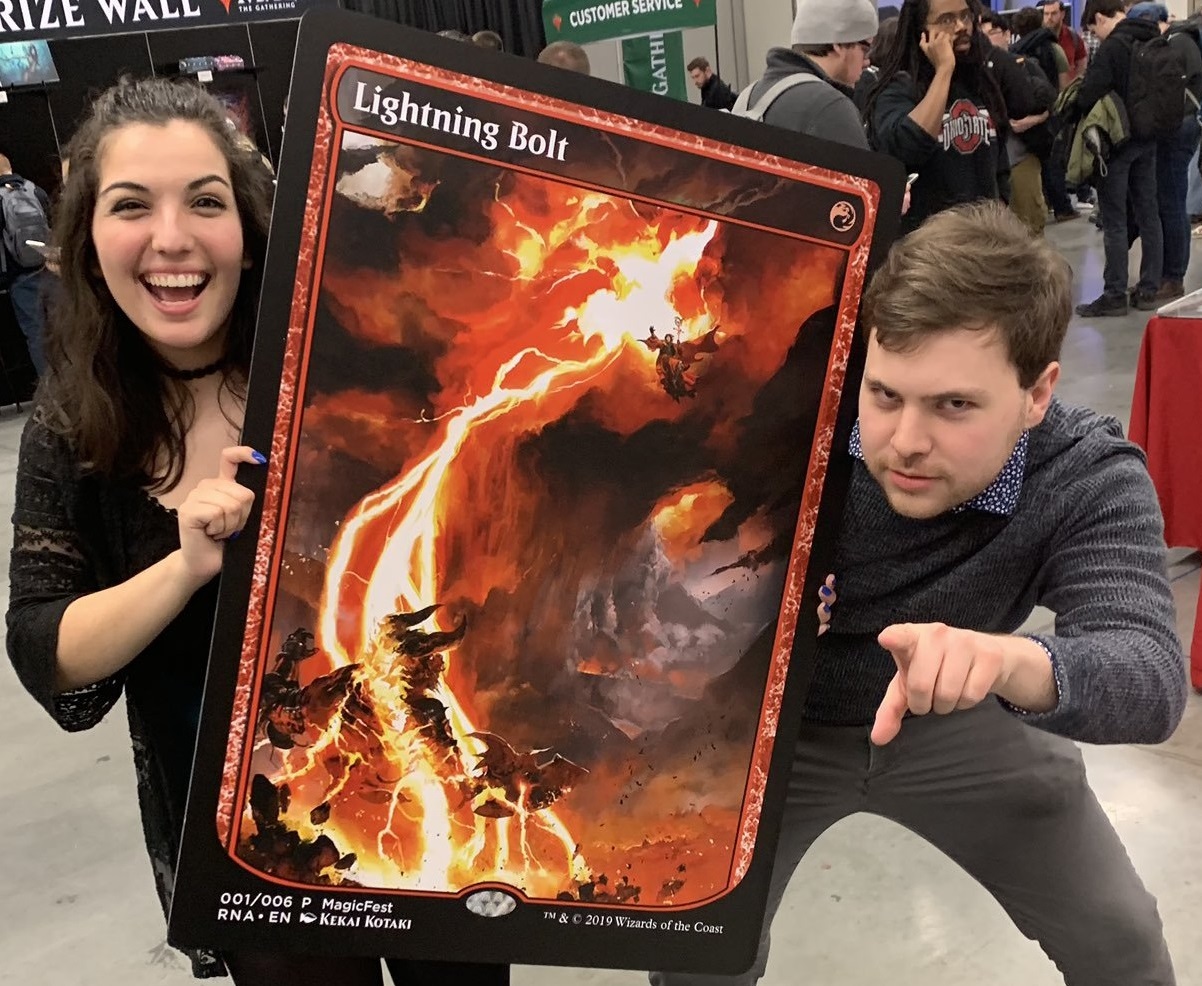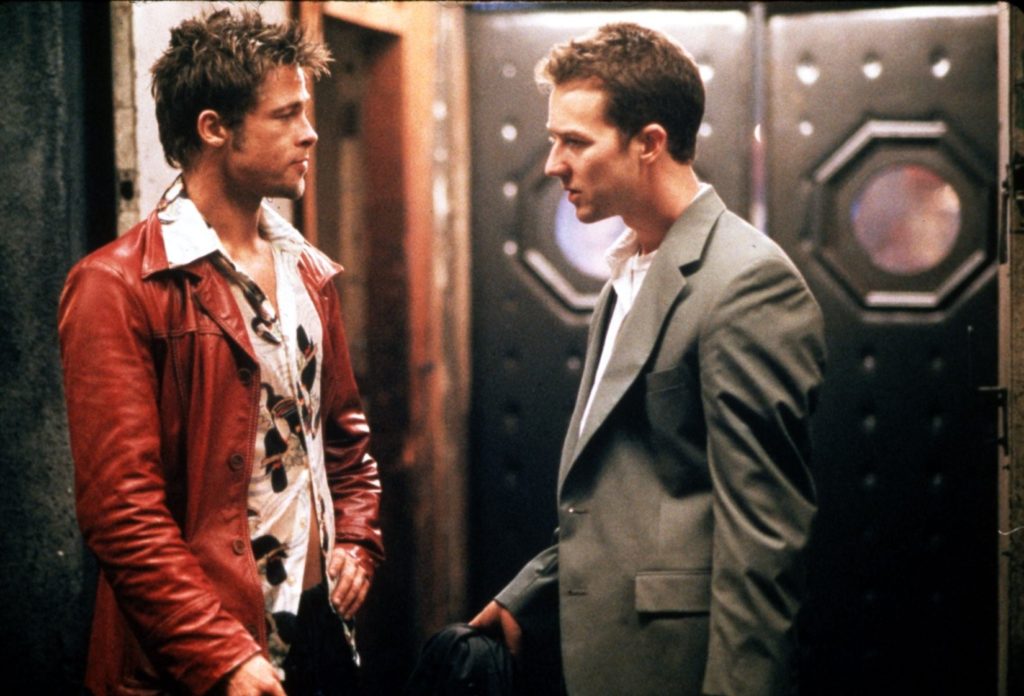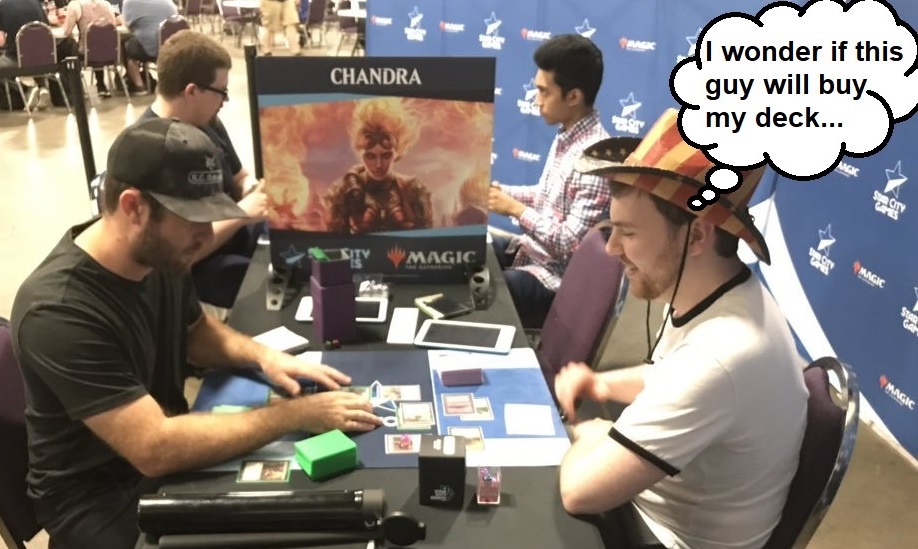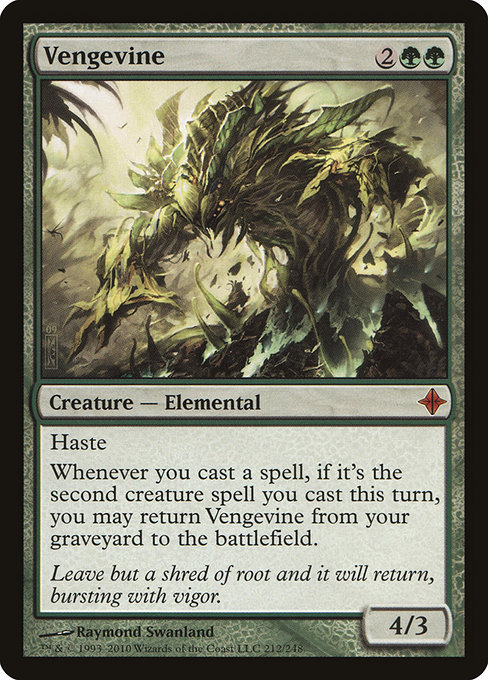Are you a Quiet Speculation member?
If not, now is a perfect time to join up! Our powerful tools, breaking-news analysis, and exclusive Discord channel will make sure you stay up to date and ahead of the curve.
A surprising amount of MTG finance plays out on tournament floors. Between StarCityGames Opens and Grand Prix/MagicFests, these massive tournaments often wind up driving prices as much as or more than new set releases. Pro Tours/Mythic Championships are a different animal entirely; often dictating the course of the entire associated constructed format for weeks or months to come.
The Easy Stuff
Pro Tour finance tends to be very straightforward. A card that has a strong showing on camera will likely see a price increase. The order of magnitude is determined by how vast the difference is between the old perception of the card and the new perception of the card. A bulk mythic that turns into a 4-of in the best deck will see a massive price increase.
A more obviously powerful mythic like Teferi, Hero of Dominaria will see a smaller increase. Pro Tour finance is very intuitive, and stories of individuals buying numerous copies of a breakout card for a massive discount are common.
The Aggressively-Not-Easy Stuff
SCG Opens and MagicFests are far messier. Most competitors at these events are trying to mitigate their losses/maximize their gains, and don’t know the best way to do it. I get asked all kinds of questions at these events about blink-and-you’ll-miss it finance plays. “Should I sell my entire Hogaak, Arisen Necropolis deck to a vendor after the event?” “What’s the best way to convert prize tickets to cash?” “Should I buylist my Wrenn and Sixes for $62 per (MF Detroit buylist price) and hope to buy in cheaper in two months?” These are just a few examples, but they illustrate a similar picture: there are few or no common-knowledge heuristics for buying and selling cards at large Magic tournaments.
Have Tickies, Want Monies
The easiest method to develop a heuristic for is converting prize tickets to cash. Unlike other MTG finance decisions, this one tends to change very infrequently. Aside from a few small deviations, prize ticket values and prizes are usually very similar from tournament to tournament. It can certainly be overwhelming to walk up to the prize booth and be met with over a hundred different methods of spending your prize tickets. Typically, most of these can be ignored if cash is your primary concern.
The most common valuable conversions are current set booster boxes, oversized cards, and uncut sheets. The latter two options are very rare items that can usually be sold for a higher rate than the normal ticket to booster pack conversion. In the past, I often saw complete sets being slightly undervalued by SCG’s prize wall, but they seem to price them more appropriately these days. I would still recommend calculating how many booster packs a complete set would cost you and compare that with how much you can sell it for on eBay if you’re willing to put in the work. Keep in mind that you’ll lose 10-15% of that eBay number to fees and shipping costs.
Current set booster boxes are easy to convert to cash. Just undercut Amazon/eBay in your local Magic Facebook group and a buyer will materialize. Undercut it by $5 if it’s a popular set, or by $10-$15 if it’s an unpopular one.
Going Big
Oversized cards and uncut sheets are much harder to sell, because the market is very niche and they are bulky and fragile, making them difficult to ship. With oversized cards, don’t even bother unless it’s a more iconic card that people will want, but there is a sweet spot. MagicFest Detroit had a sweet Japanese alternate art Narset, Parter of Veils as an oversized option, but it cost as many tickets as two oversized Lightning Bolts.

I doubt the monetary conversion would work out favorably there. Uncut sheets tend to be much more of a slam dunk because the demand for any uncut sheet is going to be higher than the demand for an oversized Glorybringer. The cardinal rule for uncut sheets is to treat them like they’re stolen paintings from the Louvre. They’re extremely fragile and easy to damage, and if you let that happen to yours, you’re going to feel like an idiot. Don’t bother with eBay on these; take them to one of the associated Facebook groups. The market there is stronger and the fees are lower or non-existent.
Let's Lay Down Some Ground Rules
An important rule to keep in mind when converting your tickets is to think about any purchases you might be making in the next few months. If you’d be spending cash to buy two boxes of sleeves in the next 3 months, you should absolutely save yourself the cash and snap those up now for tickets. Same goes for cardboard. Is there a new staple that you need for your deck? Grab store credit and save yourself the cash.
Our other frequent tournament questions are more contextual. We’ll stick to my two golden rules of MTGFinance for these:
- Lock in surplus value as soon as possible.
- Cut your losses as soon as possible.

Two rules.
These rules paint a very risk-averse portrait of me. This is an accurate portrayal. I’ll take some stupid risks sometimes for funsies, but most people would rather my advice make them some money rather than give them a stack of Sundial of the Infinites.
Example Time!
An example of Rule 1: Did you buy your Wrenn and Sixes when they were $25? If so, go ahead and buylist them for $62 and lock in that value. Don’t expect them to randomly tank in value unless you like to gamble, so if you need some of those to play with, hold onto them.
An example of Rule 2: Go ahead and sell your Hogaak, Arisen Necropolis deck. This question was asked to me pre-banning at SCG Pittsburgh, and even now that the deck is coming back to the forefront of Modern, I still think selling was correct. Lots of the deck’s staple cards have gone down in price since then, so much so that if you still needed them you could have bought them back with your buylist bucks now.
Can you imagine how much of a slam dunk it would have been if Hogaak, Arisen Necropolis was banned as well? Or Vengevine? Don’t get greedy. If you care about money enough to consider buylisting the deck, you should buylist the deck. You may lose some amount of money depending on at what point you bought in, but if you wait a week to try and sell the cards online to an apprehensive market and get gut-punched by the banned and restricted announcement, you’re going to feel foolish.
Thank You For Reading!
If you try and apply these rules first and foremost to your MTG finance decisions on the tournament floor, you’ll find yourself more frequently in the situation of being able to buy card for the next tier 1 deck. More importantly, you'll less frequently be in the situation of leaving your banned deck in a deckbox on your kitchen table for 14 months until Survival of the Fittest gets unbanned in Legacy and spikes your Vengevines again. Thanks for reading, follow me on Twitter, flame me on MTGO, etc, etc.








